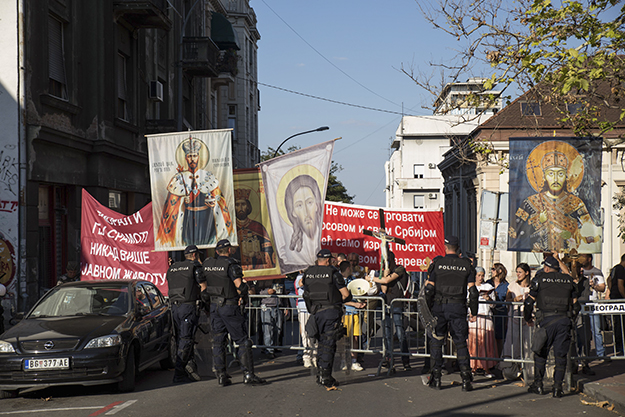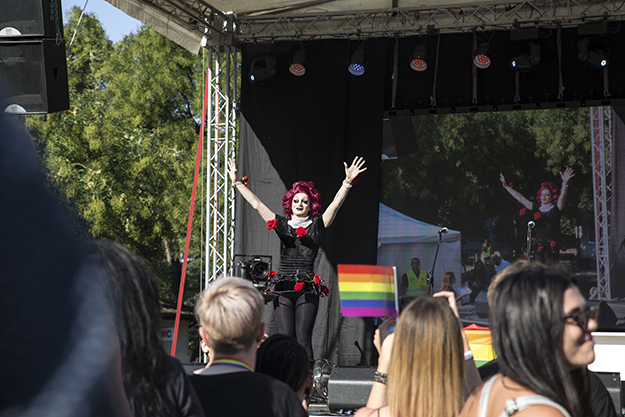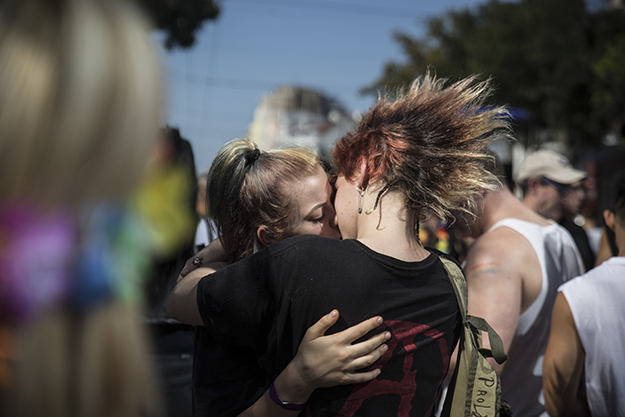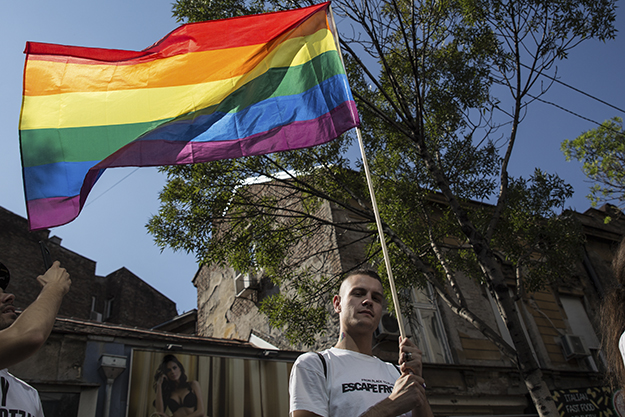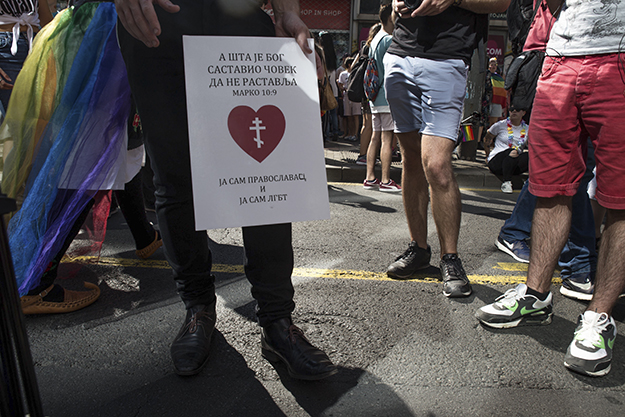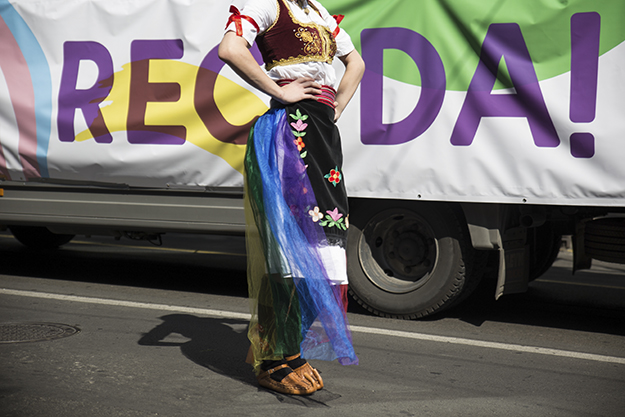Belgrade’s fifth Pride parade without violence or incidents was held in the Serbian capital on Sunday (Sept. 16), under the slogan “Say YES.” The Pride stroll in the Serbian capital has been an event in the past five years that is characterized by being both a protest and a celebration, representing a sort of a coronation of ‘Pride Week’ — a variety of panel discussions, exhibitions, and other events dedicated to people who identify as LGBTQ status in Serbia.
However, under the glitter and rainbow color flags, not everything is so gay.
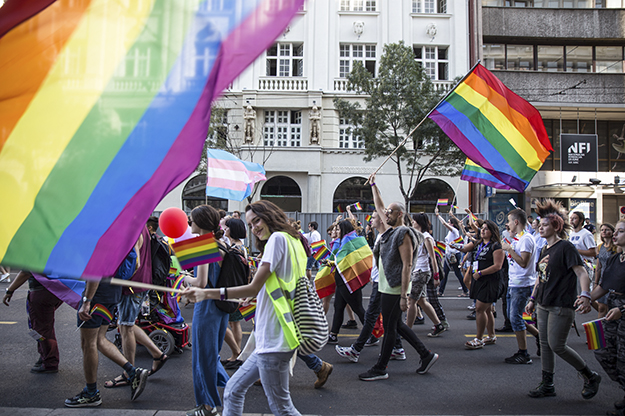
Photo: Lazara Marinković.
The Belgrade Pride organizers stated that, there were half as many police officers securing the event in comparison to previous years, when there have been up to 5,000 security service members present. However, the city center was blocked during the manifestation by police cordons, police vehicles, cavalry patrol, gendarmerie, and police dogs were on alert. Everything was conducted with no incident in sight, even though a smaller group of some 15 people with anti-gay billboards, Orthodox Christian icons, and a picture of convicted war criminal Ratko Mladić peacefully protested close to the police cordons.
The gathering of Pride participants started around noon close to Slavija Square, with music, balloons, rainbow colored flags, dancing, and drag performances. Prior to the stroll, one Serbian drag artist, Dita Von Bill, dressed in Serbian traditional folk costume decorated with rainbow color fabrics, was declared this year’s ‘Pride Queen.’
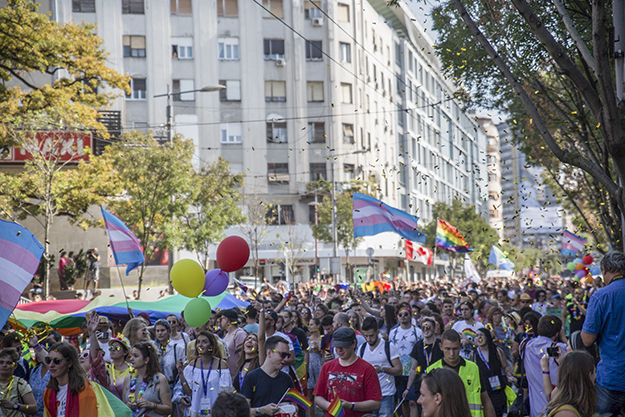
Photo: Lazara Marinković.
“Love is a traditional value, not violence or hate — I want to send this message with my outfit. I am very proud of you and myself,” Dita said during her speech ahead of the Pride march.
Journalist Suzana Trninić was declared the ‘godmother’ of this year’s Pride. In a touching speech ahead of the Pride march, she emphasized to present, including those of her friends who question whether LGBTQ people should be supported, that “you don’t have to love that which you don’t understand, but you are obliged to respect it.”
With strong words of solidarity for all those whose human rights are violated on a daily basis, she sent the message that “we will remember the friends who kept quiet more than the enemies who were loud,” calling on all those abstaining to join in the fight for a better society.
The parade, which started in mid-afternoon, ended in the Students’ Park, where, for the first time in history, there were Pride socializing and music programs until the early evening hours.
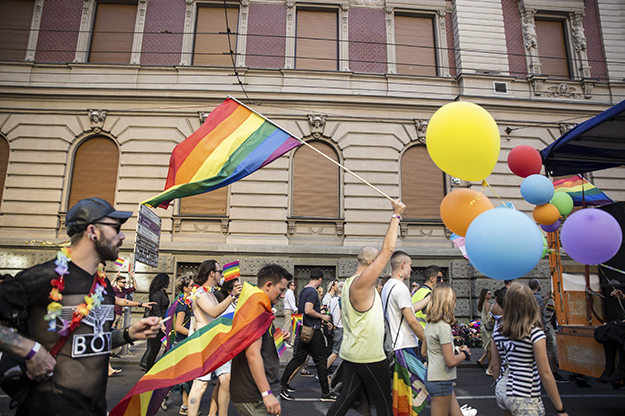
Photo: Lazara Marinković.
Besides a few hundred LGBTQ people from Serbia, there were also straight allies with their children and families, representatives of civil society organizations and local LGBT activists, as well as many LGBT activists from abroad and foreign diplomats.
Pride was also attended by ‘sentry’ Serbian officials and politicians. In the course of media addresses by the new mayor of Belgrade, Zoran Radojičić, and various ministers, one could hear well-known refrains about how “all citizens of Serbia, no matter their sexuality, gender, sex, skin color, and other personal properties, should be equal and how the state should work on improving their status by adopting laws.”
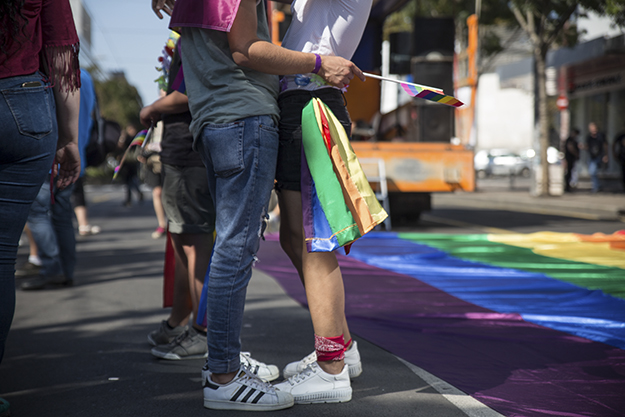
Photo: Lazara Marinković.
In practice, Serbia has been waiting for a same-sex community draft law, as well as a gender equality and gender identity draft law for many years. These laws would enable trans people to make gender changes in identification documents without mandatory sterilization or medical adjustment of sex. They would also enable transgender people to lead dignified lives without discrimination and rejection, even without having to out themselves when showing their non-gender specific document at places such as the bank, school, faculty, job interviews or hospital.
In 2013, the Criminal Code of Serbia introduced the notion of hate crime, but until this day there has not been a single verdict on this basis of violence against LGBTQ persons. On the contrary, in many cases of violence that have been reported, for example, those documented by the Da se zna! (Let it be known!) organization, perpetrators who have beaten trans and gay people using death threats, have received smaller, rather than bigger penalties, utilizing different “mitigating circumstances” for their crimes.
While the number of attacks against LGBTQ people has reduced, LBGTQ rights organizations say that a far greater number of cases are not actually being reported to the police out of fear, and due to a — one could say justified — distrust toward institutions.
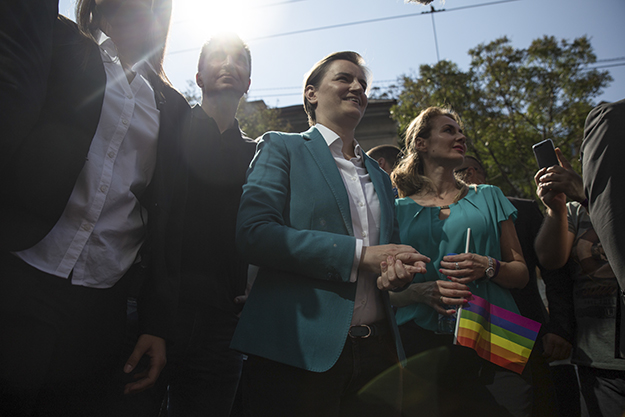
Photo: Lazara Marinković.
Prime Minister Ana Brnabić — the first woman and ‘out’ lesbian to hold such a high state position in Serbia — didn’t officially address the media, but prior to the march she visited Pride participants and spoke with activists. Many activists in Serbia, as well as LGBTQ people themselves, believe that Ana Brnabić isn’t doing enough — or indeed doing anything at all — to protect LGBTQ rights in Serbia, nor does she essentially understand them, and hence her appointment to the position of prime minister is pure ‘pinkwashing.’
On the official Twitter account of the Prime Minister of Serbia, where photos relating to events attended by Brnabić are posted on a regular basis, there were no posts about her visit to this year’s Pride.

